Origins in Sandford
The Mortimers had lived in Sandford since at least the late 15th century. James Mortimer was the first known member of the family, and was perhaps a son of John Mortimer of Woolfardisworthy. James was born about 1490, as he seems to have married by about the 1510s when his daughter Thomasin was born. He also fathered a son John, who was perhaps named after James’ father. Around this time, James’ mother Alice died, leaving a will and bequests of plate and other goods to her granddaughter Thomasin upon reaching majority or her marriage. James Mortimer was the executor and perhaps the eldest surviving son, acting as a trustee for Thomasin in her minority.
Between 1515-18, John Guy brought suit against James Mortimer in Chancery for detention of deeds relating to land near Crediton. John Guy was a prosperous yeoman from Kingsbridge who married Mary the daughter of Thomas Prowse Esq., a local landowner. Through this marriage, the Guys gained property in Sandford and enhanced their regional connections. The Mortimers also intermarried with the Guys in later generations, so it is possible the two families were already connected before John Guy moved from Kingsbridge to Sandford around the year 1515.
James Mortimer prospered through farming and the burgeoning wool trade, which by the early 1500s had started to recover from a low ebb in the mid 15th century. Many yeomen in the Crediton area were starting to exploit opportunities in the wool trade, by producing serge or unfinished cloth, which would then be sent to Exeter for export. By 1524, James had become relatively wealthy with a yearly income of £20, making him the richest Mortimer in Devon.
James’ daughter Thomasin married Richard Hawkridge, to whom her father made an agreement of payment in a marriage settlement. Sometime between the years 1533-38, James had yet to make the payment, so Richard sued James in the Court of Chancery. Whilst the Mortimers were hardly unfamiliar with family lawsuits, further research is required to determine the outcome of this case. It seems likely the two sides managed to reach agreement.
Mortimers of Priorton
The 1530s were a time of great constitutional change in England. The Church of England was founded in 1531, and Henry VIII broke with the Roman Catholic Church in the 1534, making himself Supreme Head of the Church. This effectively made England a pariah state. In order to provide income for the wars in which England was embroiled, the suppression of monasteries and religious houses began soon afterwards. The first Act of Suppression in 1535 dissolved the lesser monasteries, intending to act as a cash flow for the nation’s coffers. The 1539 Act of Supremacy dissolved the larger religious houses untouched by the first act. This was one of the most revolutionary events in English history and would shake the very foundations of the state, with far reaching repercussions affecting the whole country. In Devon, the monasteries and priories were the largest landowners, and when their lands were sold, there was a huge rush to acquire land. Many people with existing means were able to quickly climb the social ladder.
While it’s not certain which side of the political and religious divide the Mortimers sympathised with, the majority of the West Country was largely supportive of Protestant reform. It is also clear that some members of the Mortimer family directly benefited from the changes. Plympton priory was a particularly large landowner in Devon, and one of their holdings was Priorton Barton in Sandford, where ancient farm buildings and a later farm house still exist. The name of Priorton itself suggests a connection to the priory. Unfortunately no illustrations of Plympton priory survive. Priorton Barton was a neighbouring farm of the Guy’s farms of Prowse and Dodderidge. Upon dissolution, Plympton priory was dismantled for building materials and all the priory’s land sold off. Most of the land was acquired by wealthy gentleman, including the Guy family. Anthony Harvey bought Priorton manor but then leased the land to the Mortimers. Around the 1550s, either James or John Mortimer acquired the leasehold of Priorton.
James Mortimer died in 1558, naming his son John as his heir, his wife appears to have predeceased him. He gave a small bequest to John Hokeridge (Hawkridge), who was presumably a grandson and godson. He gave half the residue of his flock of sheep to godson John Mortimer, presumably also a grandson. He appointed his neighbour Robert Guy, gent., a trustee and the will was witnessed by Thomas Mortimer (d.1581).
John Mortimer senior held Priorton, Sandford, and died the following year, though unfortunately his will doesn’t survive. His son was John Mortimer, yeoman, of Priorton, d.1605, who married Wilmot but had no surviving issue. In his will he left various bequests to his household servants, including James Mortimer, who was presumably over the age of 21. John also mentioned brothers William Mortimer and Nicholas Mortimer, with sisters Alice and Joan, both married to yeomen. He also named a nephew, Hugh son of William Mortimer, who was perhaps the Hugh who died in 1627 without surviving issue. John’s brother, William, lived at Priorton Barton after 1605.
Mortimer family tree in Sandford
The parish of Crediton in mid-Devon was home to the Mortimer family in the early 16th century. This raises the suggestion that the family could perhaps trace its origin in Devon nearby.
Several of these Mortimers resided in Sandford, a chapelry of Crediton, but which later became a separate parish with its own register (which sadly only dates back to within a few years of 1600. Despite this late register, the general relationships of the family can perhaps be estimated with reference to other records, including the Devon lay subsidy rolls and various extracts which were made of Mortimer wills, before these wills were destroyed in the Exeter Blitz.
The first member of the Mortimer family in Devon was perhaps named John, guessing from the popularity of the name in subsequent generations. Various sporadic references to both “John Mortymer” and “Robert Mortymer” were made in a nearby manor court roll in the preceding century, which may relate to the preceding generations following a conventional naming pattern. The pedigree here begins theoretically, with a John Mortimer, who married Alice, and who may be the same as John Mortimer of Woolfardisworthy/ Wolsworthy, but further research is required to determine the facts. An absence of any available evidence may mean having to resort to educated guesswork to fill in the blanks for the earlier generations.
John Mortimer (c.1466-c.1510)
The ancestor of the successive Mortimer generations was presumably John Mortimer, who may have been born nearby. He married Alice and they had a son, James Mortimer d.1558. His wife Alice died after the birth of her granddaughter Thomasin daughter of James. Alice presumably outlived her husband, as she left goods to her granddaughter Thomasin, presumably in her will. This insight is recorded in a document from the 1530s. She certainly died and left a will before 1533.
In the 1524 Devon lay subsidy, several Mortimers were listed in Crediton. At this time, Sandford was a chapelry and part of the parish of Crediton. Since all of the Mortimers living in the parish at that time had different names and similar birth dates, it seems reasonable to assume they were siblings of James. If the individuals listed were of different generations, we may expect to see a repetition of names, as can be observed in the 1642 Protestation Oath roll. The John Mortimer and Richard Mortimer who lived in Bradninch in 1524 perhaps represented a separate branch, despite the fact both these names are missing from Sandford/ Crediton in 1524.
Alice Mortimer was not listed in 1524; she had perhaps died or remarried. A Joan Mortimer was living in Sandford in 1524, presumably a widow. Her husband’s name will probably remain uncertain unless further documentation comes to light.
John and Alice Mortimer may have had the following children:
1. John Mortimer of Rewe (c.1490-aft.1526), recorded at Rewe near Exeter in the 1524 Lay Subsidy, with a value assessed at £18 in goods, only slightly lower than James Mortimer. He may have been the John Mortimer, Merchant of the Staple in Exeter, recorded in 1526. It is unknown if he had issue.
2. James Mortimer of Sandford (c.1491-1558), was the most prosperous member of the family, as can be seen from the lay subsidy. As such, he would have been a yeoman farmer and perhaps represented the most senior line of the family. The lay subsidy shows James Mortimer had goods assessed at a value of £20 in 1524, which was significantly higher than many other Mortimers nearby.
James is unexpectedly absent from the 1543 subsidy, but assuming James Mortimer who died in 1558 is the same individual as in the 1533/38 court case, he should be present. The entry for Thomas Mortimer, with income of £20, exactly matches James Mortimer’s entry in 1524, and could be a scribal error for James. Otherwise, the entry is particularly curious. There is an additional entry for Thomas Mortimer in 1543 with income of £4, who was presumably the same Thomas Mortimer to witness James Mortimer’s will in 1558, and who died leaving a will in 1581.
James Mortimer was already old enough to be a grandparent in the 1530s. It is possible to construct the pedigree by suggesting two successive generations of James Mortimers, but in the absence of evidence, the different records for James Mortimer presumably represent the same person. James was possibly related in some way to the Guy family, as there was a legal case between James and John Guy in 1515/18 but he appointed Robert Guy as a trustee in his will. Nicholas Mortimer owed him a debt of 40s. in 1556. James Mortimer made a will dated 19 Oct 1558, as related in the following extract:
Will of James Mortymer
To be buried in parish church, and leaves to the maintenance thereof two sheep.
He disperses the residue of his flock between his “godchildren ” John Mortymer the younger and Ebbot Rowe.
To John Hokeridge, £3 6s. 8d.
To Nicholas Tree, 33s. 4d.
Residue to son John Mortymer, “he to dispose of part of my goods for the wealth of my soul, and the rest for the preservation of his bodye.”
Trustee: Robert Gye, “gent.”
Witnesses, Sir Thomas Lobone, clerk, and Thomas Mortymer.
Proved 15 Nov 1558.
1. Thomasin c.1513, was given a bequest in her grandmother Alice Mortimer’s will. She married Richard Hawkridge before 1533/38, and had a son, John Hawkridge fl.1558, mentioned in James Mortimer’s will.
2. John Mortimer, perhaps the same John Mortimer of Priorton (c.1519-1559).
3. _ Mortimer c.1493-c.1520?
From sporadic records of the preceding generations, we may expect John and Alice to have a son named either John or Robert, and there is documented reference to a John Mortimer of Woolfardisworthy, whose son Robert was married before c.1505 to Joan. This may have been the same mystery family member who was the husband of Joan Mortimer (widow), living in 1524. If this was Robert Mortimer, it would indeed match up, but the evidence is perhaps not compelling enough to connect the families definitively, especially given the presence of another Joan Mortimer, widow, listed in 1524 in the parish of Stockleigh English.
i. Thomas Mortimer (c.1520-1581); was listed in the 1543 lay subsidy with goods assessed at £4, the same as Joan Mortimer, widow in 1524. He witnessed the will of James Mortimer in 1558, and was presumably the same Thomas Mortimer who died in 1581, who left a will as follows:
The last will of Thomas Mortimer “well disposed & god.wende”
He devizes to be buried in the Church-yard of Sandford” betweene the Chancell door & the palme crosse & to have a limbe upon my burial & a broad stone upon it”.
He leaves to the maintenance of Sandford Church 12d.
To each “of the poor of Sandford Town, two seams of wool & to the poor of Bridge (Credy?) a seame apeece”.
To each of his five servants 20s. each.
To Joan wife of John Milford 6s. 8d.
To John Maunder’s children 3s. 4d. each
The same to John Robert’s children
Residue to John Maunder “my son in law” & Mary wife of John Roberts “my daughter”, who are joint exors.
Witnesses. Thos Hutchings, Thos Moxage
Proved 3 Jun 1581
Sum £88 18s.
5. William Mortimer (c.1494-c.1550) was recorded in Crediton in 1524, assessed on £6 in goods and 1543 at the same amount. He was a contemporary of William Mortimer of Bow (c.1496-c.1533). If William Mortimer had a son named John Mortimer c.1522-c.1555), it seems likely that William’s father was called John. William was present in the 1543 lay subsidy, but had perhaps died before both James and Nicholas Mortimer, for he is not mentioned and did not act as a witness to either will.
i. John? Mortimer c.1528-c.1560?, may have been the mystery ancestor of the Mortimer family of Ranscombe in Sandford.
4. Nicholas Mortimer of Sandford (c.1497-1556), was presumably a brother of James Mortimer d. 1558. He was listed in Crediton in 1524, with goods assessed for £4, and in 1543, assessed for £2. Nicholas Mortimer made a will dated 12 Dec 1556 with an abstract as follows:
Will of Nicholas Mortymer
Bequeaths his ” soul to Almighty God and our Lady the Virgin, and to all the Holy Company of Heaven.”,
To the ” High Cross,” 20d.,
To son John, six silver spoons,
To son Davye Mortymere, a littill crocke, and a four gallon panne, and three silver spoons
To daughter Agnes, a white panne of five gallons,
To Margaret Parkhouse, a five gallon panne,
To Edward Mortymere, a two gallon panne,
To Joane Mortymere, a gallon panne,
Residue to wife Joan, sole executrix.
Debts owed: To Christey Hop, 12s, to James Mortymer, 40s.
Witnesses: Sir William Tristamb, John Vilvayne, James Mortymore.
Proved 19 Feb 1556/7.
Note that his first three beneficiaries are his children, and Margaret Parkhouse, Edward and Joan Mortimer may also have been his children. John was presumably the eldest:
i. John Mortimer – may have married Agnes Mortimer whose will follows:
Will of Agnes Mortimer of Sandford, 27 May 1569
She devises to be buried in Sandford Church, and leaves to the poor there 2s.
To my servant “my best round gown”, two kerchiefs & pletter
To “my son in law” John Dier 43s. 4d. “which he owes me” and a brazen pot etc.
To Elizabeth Dier 3s. 4d.
To John & Richard, children of John Dier, 3s. 4d.- half a dozen sheep & a “Chandeler” apeece
To “my daughter Alice Kelond” “my best new panne” etc.
Also a cow “now in John Richards hands at Morchard”
Residue to my son John Mortimer, who is sole exor.
Two trustees. Jno Dier & Jno Osborne,
Witnesses. Jno Delfe, Jno Osborne, “with others”
There are several legacies to servants.
Proved 4th May 1571
Sum £3 17s 8d.
Agnes and her husband had the following children:
1. John Mortimer, perhaps the same as John Mortimer of Ashridge (c.1542-1609).
2. A daughter, married John Dier.
3. Alice (c.1545- ), married a Mr Kelond.
ii. Edward Mortimer (c.1523- )
iii. Davy Mortimer (c.1525- )
1. John Mortimer (c.1552- ), m. Margery Webber 8 Feb 1574/5 Tiverton. Perhaps died 1618 Tiverton, admon. granted to Silvester Parkhouse (son of William Parkhouse of Knowstone c.1555-1594 and Margaret his wife c.1556-1598). Perhaps John d.1618 was their son and Margery remarried to William Parkhouse.
2. Mary (c.1556- ), m. Robert Beddle 11 Apr 1577 Tiverton.
3. William Mortimer of Tiverton (c.1560-c.1615), m. Elizabeth bur. 29 Dec 1602. Had at least one son:
i. Edward Mortimer (c.1600-1612), bur. 7 May 1612. [It is noted that a will of Edward Mortimer of Uplowman dated 1612 existed but no extract survives]
4. Agnes (c.1561-1589)m. Thomas Dunn, 14 Jul 1582 Tiverton, bur. 30 Jul 1589 Tiverton.
5. Robert Mortimer of Cove (c.1566-1592), bur. 27 May 1592 Tiverton. He may instead have been a son of John Mortimer of Priorton, as Nicholas son of John also resided in Tiverton.
6. Joan m. Richard Dunn, Jan 1593/4 Tiverton. She was probably born c.1570, as her youngest child Tamsin was born in 1610. She died in 1644, Tiverton. Potentially the widow of Robert Mortimer d.1592.
iv. Margaret? (c.1530- ) m. _ Parkhouse.
v. Agnes (c.1535- ), fl.1556.
5. Roger Mortimer of Crediton (c.1500-c.1550) was recorded in the 1524 and 1543 Lay Subsidies, and assessed at £1 in Wages and £1 in Goods respectively. Perhaps the father of Walter Mortimer, assessed at £1 in 1543. It would not be a surprise if he also had a son John. [It is noted that there was a John Mortimer of Witheridge and John of Thorverton, both assessed for £1 in 1543. Walter may have been the mystery ancestor of the Mortimer family of Crediton.
Mortimer farmsteads
The Mortimers lived at several farms over the centuries, presumably holding the leasehold. These included Priorton, Blackmorescombe, Ashridge, Ranscombe (New Buildings), Lithybrook (Lillybrook) and Dogbeare (Doggetsbeare). Farmhouses still exist on these sites, but Lillybrook is the only one to show signs of antiquity. In some cases it is possible to follow the different Mortimer families based on where exactly they lived. Here we follow the different Mortimer family lines within Sandford:
John Mortimer (c.1519-1559) of Priorton
John was born around the mid to late 1510s, presumably the son of James Mortimer (c.1491-1558). John Mortimer was listed in Sandford in 1543, with goods assessed at £4. Either John or James Mortimer acquired Priorton Barton manor after the dissolution, which was formerly owned by Plympton Priory. In 1558, he executed his father’s will, and Thomas Mortimer was a witness. He died the following year while residing at Priorton, his will unfortunately does not survive. He married Maud, with whom he had the following children, and Maud remarried after his death to Gilbert Philip, yeoman, who was listed in the 1581 lay subsidy in Sandford.
1. John Mortimer (c.1548-1605), perhaps the same John Mortimer mentioned as a godson in the will of James Mortimer. When he reached full age, he sued his step father Gilbert Philip for failing to deliver property to him that was his birth right. John married Wilmot before 1592. John Mortimer and Wilmot his wife were also mentioned in a marriage settlement dated 15 May 1595. Around 1600, John became a godparent to John son of Roger Mortimer, yeo., who died in 1614, Crediton. John of Priorton left a will dated 1 Feb 1604/5, mentioning his capital messuage of Priorton, and his wife Wilmot. A full transcription of the will can be read here. He also gave various bequests and legacies to his family members. The will mentions his brother William Mortimer, who had a daughter Julian and other minor children, and his brother Nicholas who had a daughter Bridget and son Hugh. John’s widow Wilmot may have been bur. 1 May 1610, Sandford.
2. Alice Mortimer c. 1550, was mentioned as sister Alice Gifford in the will of John Mortimer d. 1605. She perhaps married William Gifford of Crediton. Amy daughter of William Gifford was born in 1593, Crediton but died in infancy.
3. Joan Mortimer c. 1552, who perhaps married John Fugars d. 1583. She was mentioned as sister Joan Fugars in the will of John Mortimer d. 1605. The Fugars family later lived in Poughill.
4. William Mortimer (c.1553-1625), who appears to have lived in Sandford. He was perhaps the William Mortimer with income assessed at £1 in Land, in the 1581 Lay subsidy, unless this was William Mortimer of North Creedy d. 1604. He presumably married in the 1580s, as both his children mentioned in his brother John’s will in 1605 were under age 21. In Feb 1605, he was mentioned in his brother’s will and had a daughter Julian, along with other children still in their minority. References to William survive in Sandford parish register: John Ware, his servant, was buried 28 Dec 1605, and Thomas Brodford, servant of William Mortimer of Priorton was buried 4 Jun 1606. He was perhaps the William Mortimer of Blackmanscombe named in a counterpart of lease in 1619, which also recorded his daughter, Mary. In 1624, Hugh, manservant of farmer Mortimer was buried, which record perhaps referred to the same William Mortimer. William Mortimer of Blackmanscombe, was buried 5 Apr 1625.
William Mortimer of Sandford had the following children:
i. Julian c. 1590, was the eldest daughter, mentioned in the will of John Mortimer of Priorton in 1605, and m. Edward Barlabin 7 Dec 1618 Sandford.
ii. Joan? c.1592-1643, may fit here: m.1. Roger Clash (1588-1623), 22 Jun 1612 Sandford; m.2. Leonard Tricker (c.1599-c.1650), 28 Jan 1631/2 and bur. 31 Aug 1643, Sandford.
iii. Zippora? c.1594-1665(?), m. Thomas Spicer (c.1590-1643), 25 Sep 1615 Sandford, and bur. 21 Jun 1665, Sandford.
iv. Naomi? c.1596- m. James Labdon (c.1597-1652) 10 Aug 1618 Sandford, bur. 4 Apr 1637, Sandford.
v. Mary? c. 1598-aft. 1619, daughter of William Mortimer of Blackmanscombe, was mentioned in the lease record dated 1619.
vi. Elizabeth c.1601-1603, bur. 20 Sep 1603 Sandford.
vii. John 1603-1603, bur. 17 Sep 1603 Sandford.
5. Roger Mortimer of Crediton (c.1555-1614), was the brother of John Mortimer of Priorton, but not mentioned in his will. His son John was John Mortimer’s godson. Roger Mortimer witnessed a land grant in Crediton, 24 Apr 1599. He married Joan, and they had issue, three sons and a daughter. Roger Mortimer of Crediton, yeoman, made his will 24 Oct 1613, at Crediton, which mentioned his late brother John Mortimer and stepfather Gilbert Philip:
He leaves to his wife Joanna £5 13s. 4d., the first year after his death, & after that a yearly rent of £13 5s 8d., charged on the tenement “where I now dwell” also certain beds etc.
To “my son” Robert, “the lease of my tenement & living where I now dwell”
To “my son” John £20 at 23. to include a legacy left him by Gilbert Phillip decd. also £3 to cover “a legacy left him by the will of my brother John Mortimer decd.”
To my son Roger £20 & to my daughter Joanna £20, to include legacies left them by the said Gilbert Phillip.
Residue to Robert his said son who is sole exor.
Witnesses: Hugh Harris, clerk, Peter Gye gent., Wm Thomas, yeoman
Proved 13 Jun 1614
i. Robert Mortimer (c.1590- ), born in Crediton, was perhaps named after Robert Gye, who may have been his maternal grandfather. He was sole executor of his father’s will and inherited the lease of Roger’s house in Crediton.
ii. Roger Mortimer (1596-aft.1622), bapt. 8 Dec 1596 Crediton, married c.1621, had one son, Henry b.1623. He was a contemporary of Roger Mortimer of Ashridge (c.1595-1659), whose sons were Thomas b.1625 and John b.1628. Perhaps the same as Roger Mortimer of Whitestone, who had a son Henry:
1. Henry Mortimer (1623- ), bapt. 3 Jan 1622/3, bur. 4 Jan 1622/3 Crediton.
iii. John Mortimer (c.1602- ), a godson of John Mortimer of Priorton d.1605, who he was perhaps named after. He was below the age of 23 in 1613. Perhaps lived in Tiverton. Mary Mortimer m. John Puddington, _1630 Tiverton could have been his widow.
1. William Mortimer of Tiverton (c.1623-1682), may have been a son of John. A fuller by trade, he leased property in Tiverton in 1670. In 1671, the “Mortimore tenement” was mentioned in the will of John Prowse of Tiverton. In the 1674 Hearth Tax, William was taxed on 3 hearths in Tiverton, the most of all Mortimers listed in the Hearth Tax records. William Mortimer married Joan, about 1655, who predeceased him and was bur. 28 May 1682 in Tiverton. In his will he expressed the wish to be buried in Crediton, presumably where he was born. William was bur. 6 Sep 1682 Crediton and an abstract of his will follows:
Will of William Mortimore the elder, of Tiverton, 22 Aug 1682.
Desires to be buried in Crediton Churchyard.
“To William Mortimore’s wife my three gold rings.”
To son, John Mortimore, ” one sylver spoone.”
Residue to sons, William and John Mortimore, who are joint exors.
Proved 16 May 1683.
William and Joan Mortimer had the following children:
i. James (1656-1661), bapt. 19 Jun 1656, bur. 22 May 1661 Tiverton.
ii. Thomas (1659-c.1660), bapt. 21 Feb 1658/9; not mentioned in father’s will, presumably predeceased him.
iii. John (c.1660-1662), unknown bapt. date, was bur. 21 Aug 1662.
iv. William Mortimer of Crediton (1661-1696?), bapt. 23 Dec 1661, a fuller, lived in Crediton. He seems to have been married before 22 Aug 1682, perhaps to Elizabeth Hambling in 1677, Crediton. William and John were executors of their father’s will. In 1684, William and his brother assigned a lease to Mark Daw of Tiverton. Administration of the estate of a William Mortimer of Crediton was granted in 1696. An abstract of this record exists but has not yet been reviewed.
v. John Mortimer of Tiverton (1663-1724), bapt. 9 Dec 1663, a wool comber. Listed in the Oath Roll taken at Exeter Castle 4 Dec 1723. He was bur. 1 Oct 1724 and had no known children.
iv. Joan Mortimer of Poughill (c.1598-c.1623), who never married, made a will dated 27 Aug 1622 as follows. She may have been the same Joane Mortymr bur. 6 Jul 1623 Sandford.
Abstract of the Will of Jane Mortimer
To my mother, Joan Philpe, 40s.
To brothers John and Roger Mortimer, 30s. “To the ringers of my knell,” 12d. each.
Other bequests to William Dodridge, and to Robert, his son, and to Walter Barton.
Residue to cousin, Robert Gye, sole exor. Proved 19 Sep 1623.
Her “cousin” Robert Guy, was the son of Thomas (c.1560-1620) son of Robert Guy (c.1532-1608). This suggests that Joan wife of Roger Mortimer was the also a daughter of Robert Guy. It is worth noting that Robert Mortimer married in 1619, Friston, Sussex. That Robert Mortimer was not living in Devon might explain how he was not recorded in his sister’s will.
6. Nicholas Mortimer of Tiverton (c.1558-1624), was perhaps the younger son, and was an ancestor of a branch of the Mortimers in Tiverton. He married Elizabeth Duder (c.1556-1615), 5 Nov 1582 Tiverton, and they had at least two children, Bridget and Hugh.
John? Mortimer (c.1528-c.1555) of Ranscombe
Ranscombe had belonged to the Mortimers since at least 1532, when a fragmentary lease mentioned “wife and son Mortymer of Rennyscomb”. Unfortunately the catalogue doesn’t provide their first names. The original document may provide some additional insight which could help ascertain the early generations. The “son” in the above record may have been a John Mortimer, who had the following children. He was not listed in the 1543 lay subsidy, but may have been too young to be recorded in the assessment.
1. John Mortimer of Ranscombe (c.1551-1613)
2. William Mortimer of North Creedy (c.1550-1604). William left a will as follows:
He leaves to the poor of this quarter of Sandford 5s.
To his brother Richard 5s.
To Joane Meire, my daughter, £6
To William & Edward, sons of William Meire, one pair of lombes each
To Margaret “my daughter” 40s. and the remainder of certain furniture
To each of John Mortimer’s children 12d. each.
To John Mortimer, the younger, son of the said John, my son in law 40s. at 21
To Ann Ponsford my daughter £10
To John Ponsford son of William, “my son in law” one yeo lamb.
Residue to Joan who is sole executrix
Trustees: Richard Rede, Mr Densham & Wm Ponsford
Witnesses: The first two trustees, & John Hall
Proved 31 Aug 1604
Sum £19 8s. 3d.
William’s son in law John Mortimer is presumably the son of John Mortimer, of Ranscombe, whose wife was Margery. Margery held property in Creedy, Sandford, and the parish register records the burial of Margaret Mortimer, widow, in 1640. John and his wife were presumably therefore related. Margaret, wife of John Mortimer of Rookwood, was bur. in 1628, Sandford, but it is more likely she was the wife of John born d.1642.
3. Hugh Mortimer of Sandford (c.1554-1614), was first recorded in the 1581 lay subsidy in Sandford, when he was taxed on £3 in goods. Hugh was bur. 6 Mar 1613/4 Sandford and administration was granted on 12 Mar 1614 to Elizabeth his widow, at which time the summary value of his estate was £63 0s. 10d. His wife must have inherited half the value of his estate, as Elizabeth his widow made a will dated 18 Apr 1614 as follows. She was bur. 16 May 1614 Sandford.
She leaves to Joane Downe “my daughter” “my great best chest & all that is in it” also “my best gown, my best stamys wast-coat, a laffatn apron & my best carpet”.
To Edward Clotworthy 10s.
Residue to Andrew Mortimer, my son, who is sole exor.
Trustee, Andrew Payne, who witnesses with Ambrose Carpenter,
She further leaves to Marie Clotworthy her best stainell coat, white apron, & one yard & a half of new lynnen cloth in my coffer.
Proved 7 May 1614
Sum £32 3s. 4d.
Hugh and Elizabeth Mortimer had the following children:
i. Mary Mortimer c.1584- m. John Clotworthy 29 Apr 1605, Sandford.
ii. Joan c.1587 m. _ Downe (Alexander Down d.1619?)
iii. Andrew Mortimer c.1589-1617, married Agnes Wilson by licence, 17 Jan 1613/4; Agnes was a resident of Newton St Cyres. They had one child, a son John. Andrew Mortimer died about 1618 (no burial record extant), and made a will dated 20 Feb 1617/8 as follows:
Leaves to wife rent charge on land in Crediton and Cheriton FitzPain, terminable on the life of Thomas Mortymore, charged with an annuity of _ to son, John Mortymer.
Residue to wife, sole executrix.
Trustees, in minority of said son, William Bremridge and William Esworthy. Proved 20th March, 1617/8.
Agnes, widow of Andrew Mortimer, remarried to Christopher Payne, 6 Oct 1621. Her son John predeceased her according to a court record dated 1625.
Hugh Mortimer died intestate, leaving open the question of whether he had any children by an earlier marriage. If he had a first marriage, he may have been the father of John Mortimer of Lithybrooke (c.1575-1640), and Elizabeth would have had no reason to mention him in her will in 1614. This suggestion is supported by the records of his estate: his estate was valued at £60, Elizabeth his wife left £30, and the estate of John Mortimer of Lithybrooke amounted to about £30.
1. John Mortimer of Lithybrook (c.1575-1640). John was a contemporary of John Mortimer junior of Ranscombe, and lived at Lillybrook Cottage, less than a quarter of a mile from Priorton Barton.
John made a nuncupative will 11 Feb 1639/40, incorrectly transcribed as Cheriton Bishop by Burke, which is repeated in the book Devonshire wills by Charles Worthy. It’s not known what the origin of this error is, but there is a hamlet called Cheriton Cross in Sandford parish. Careful study of the will abstract confirms the will was made by John Mortimer of Lithybrook. His children were all baptised in Sandford. John left the residue to his wife Wilmot, who was the sole executrix. The witnesses were John Woodley and Roger Mortimer, perhaps either Roger Mortimer of Ashridge (c.1595-1659) or Roger Mortimer (1617-aft.1640). John was buried only a day after the nuncupative will, 12 Feb 1639/40 Sandford, and the burial record also states he was of Lythibrooke.
John Mortimer m.1. Bridget (bur. 20 Mar 1606/7); m.2. Wilmot Eveleigh (c.1582-c.1642), 12 Jun 1609 Sandford. Wilmot Mortimer survived him and died c.1642, Sandford.
Will of John Mortimer of Lithybrook, Sandford, _th Feb 1640 (1639/40)
Sons James, John, and Gilbert
daughters Frances wife of Robert Chapell, and Ann and Joan Mortimer.
Residue to wife Wilmot Mortimer, sole executrix.
Witnesses John Woodly, Roger Mortimer.
Proved Feby 1639(/40).
[Sum £30 9s. 10d.]
John and Bridget Mortimer had issue:
i. James Mortimer of Sandford (c.1596- aft.1642), m.1. Joan Webber, 16 Jan 1616/7, who was bur. 18 Sep 1618, and m.2. Agnes Bishop, 21 Feb 1619/20. Perhaps the same James Mortimer was listed in Crediton in the 1642 Protestation Oath Roll.
ii. John Mortimer (c.1601-aft.1640) presumably born before the start of the parish register; perhaps the same John Mortimer m. Joan Strong, 1635 Sandford. Joan Mortimer, widow was bur. in 1649 Sandford.
iii. Frances bapt. 20 Oct 1605, m. Robert Chappel (b.1599 Lapford?). Perhaps m. firstly, John Kerslake, 1624 Thorverton.
* Hugh Mortimer (c.1602-c.1633), perhaps also a son of John of Lithybrook. Hugh Mortimer of Shobrooke m. Alice Elworthie of Crediton by marriage licence dated 21 Jan 1627/8. They had two children, but both died in childhood. Hugh was not recorded in the 1642 Protestation oath and presumably died before this date, around 1633. Alice his wife may have remarried to Robert Vinnicombe, 21 Sep 1636 Sandford. Alice wife of Robert Vinecombe was bur. 11 Aug 1644.
i. John Mortimer, bapt. 4 Jan 1628/9, bur. 25 Jan 1628/9 Sandford.
ii. Grace; bapt. 3 Jan 1629/30, bur. 12 Feb 1629/30 Sandford.
John and his second wife Wilmot had the following children:
iii. Wilmot (1610-1636), bapt. 15 Jul 1610, bur. 16 Dec 1636 Sandford. Admon. was granted to John Mortimer her father, 11 Jan 1635/6 with sum of goods totalling £6 13s.
iv. Roger (1612-1613), bapt. 16 Aug 1612, bur. 9 Aug 1613 Sandford.
v. Robert (1615-1626), bapt. Sep 1615, bur. 7 Mar 1625/6 Sandford.
vi. Ann (1618- ), bapt. 27 Jan 1617/8, presumably m. George Benson, 13 Apr 1658 Sandford.
vii. Joan (1620-aft.1640), bapt. 6 Sep 1620 Sandford, fl.1640.
viii. Gilbert Mortimer (1620-1656), bapt. 6 Sep 1620 Sandford, presumably a twin of Joan Mortimer. He was listed in the 1642 Protestation return in Sandford alongside Gilbert Mortimer senior. He m. Agnes Hill (1619-1688), 3 May 1647 Sandford and they had two daughters. Gilbert was bur. 14 Mar 1655/6, and his wife remarried 2 Oct 1658 Sandford to Roger Tucker, of Sandford (1628-1701), and had two sons, Robert 1660 and Simon 1665. She was bur. 24 Mar 1667/8 Sandford.
1. Elizabeth bapt. 5 Mar 1649/50 Sandford, perhaps m. John Ponsford, 11 Feb 1672/3 Dunsford, and bur. 8 May 1673.
2. Thomasin (1656-1697) bapt. 15 May 1656, m. Simon Drew 19 Jan 1680/1 Sandford, bur. 22 Dec 1697 Sandford.
2. James Mortimer (c.1580-aft.1605), servant of John Mortimer of Priorton, who gave him a bequest of £100 in his will. James was presumably over the age of 21 in 1605 as the bequest was not contingent on him reaching his age of majority, as there was for other minor beneficiaries of the will such as Thomasin Fulford. Therefore he may have been a brother of John Mortimer of Lithybrooke.
There does not appear to be further record of James, assuming that the marriage register entries of 1617 and 1620 refer to James c.1595 son of John Mortimer of Lithybrooke.
4. Richard Mortimer of Sandford (c.1557-1606), mentioned as a brother in the will of William Mortimer. He was bur. 20 Mar 1605/6. Unfortunately no will survives so it is impossible to determine whether he married or had any children. He was perhaps father of the following Lawrence Mortimer, although this could instead have been Richard Mortimer of Crediton (d.1590) whose brother was named Lawrence.
Wilmot Mortimer married John Hedge (d.1619) 3 Feb 1606/7 Sandford, and was bur. 13 Dec 1622 Sandford, widow. She may have been wife of Richard.
* Lawrence Mortimer (c.1576-1623) bur. 6 Oct 1623 Sandford. His wife may have been Lucy Mortimer, widow, bur 20 May 1653.
1. Richard Mortimer bapt. 15 Oct 1605, Sandford, perhaps m. Emmine Westlake, 22 Sep 1629, Thorverton. No children were recorded.
2. Alice? c.1613-1659, m. William Burrowe (d.1655) 19 Oct 1639, Sandford, was bur. 25 Mar 1659, a widow. Alice may instead have been the widow of Hugh Mortimer, m.1627.
3. Thomas Mortimer, bapt. _Oct 1615, Sandford, who may have been the same Thomas Mortimer of Ranscombe (1615-1681).
John Mortimer of Ranscombe (c.1551-1613)
John Mortimer was perhaps born about 1550. In the 1581 lay subsidy, John Mortimer “of Ramescombe” was assessed at £6 in goods. He was presumably living in 1604, when a John Mortimer junior of Ranscombe was documented in the parish register. This younger John was presumably a son of the John Mortimer fl.1581.
John Mortimer of Ranscombe made a will 28 May 1607, as follows:
He leaves to his son John “all my lands tenements & hereditaments of Ranscombe to him & his heirs for ever, together with the “Here corner close called the Parcke”
To William Weekes, the younger “one heyfer” & to each of the other children of William Weeks, my son in law, one yeo lamb apeece
The same to William Halse & “to the rest of Robert Halse’s children”, The same to “the children of John Mortimer”
To Agnes, wife of Robert Halse, 40s.
To the poor of Sandford 10s.
To William Jossop 12d.
Residue to Katherine his wife who is sole executrix.
Witnesses. Thos Kelland, Jno Phillip, Jno Chilcott
Proved 12 Feb 1612/3
Sum £153 0s. 6d.
John Mortimer of Ranscombe was bur. 9 Feb 1612/3, Sandford. His wife Katherine Mortimer survived him by one year and was bur. 8 Jul 1614. There is no record of a will or letters of administration for her.
i. John Mortimer II (c.1575-1637), who was mentioned as John son of John Mortimer, and son in law in the will of William Mortimer of North Creedy, Sandford, 28 Jul 1604. He married Margery (c.1575-1640), and they had the following children, all of whom were baptised in Sandford. Their son John’s baptism is missing from the parish records, perhaps because of him being born before the start of the register. John Mortimer of Doggbeare was bur. 22 Jan 1636/7 Sandford.
Letters of administration to the effects of John Mortimer
Were granted on the 9 Feb 1636/7 to Margerie his wife
James Mortimer of the same parish joins the bond.
Sum £234 1s. 8d.
Margaret Mortimer, widow, was bur. 7 Oct 1640, and left a will as follows:
She leaves a tenement in Creedy, Sandford, granted by Sir Robert Chichester of Ralegh, & determinable on the lives of her children John & Margerie, as follows. One portion of the sd. tenmt. defined by met* & bounds to her son Roger.
A dielf of 9 acres, called Chaunter’s park, to her son James, during his life & that of her son Robert.
The rest of the Creedy tenmd. to her daughter Agnes & Catherine, who are sole exors.
Residue to her said daughters.
2 Trustees: Jno Vickery & Roger Lane will 4s. each.
Witnesses: Wm Vickery, Margery Lane
Proved 30 Oct 1640
Sum £205 13s. 0d.
1. John Mortimer (c.1598-1642), presumably the eldest son. Margaret, wife of John Mortimer of Rookwood was bur. 2 Jan 1627/8 Sandford. Rookwood cottage is less than half a mile from Dogsbeare, where John Mortimer d.1637 lived at the time of his will, and is a short walk along Coppice Lane.
John Mortimer of Sandford died intestate and was bur. 10 Dec 1642. Administration of his estate was granted to his sister Katherine on 13 Oct 1643 who exhibited the inventory of his goods (valued at £35).
i. John Mortimer (c.1621-1622); John son of John Mortimer was bur. 23 Feb 1621/2 Sandford. He was presumably the son of John and Margaret of Rookwood.
2. Thomas Mortimer of Sandford (c.1600-c.1630), an important connection in the family tree, married before 1623.
i. Thomasin Mortimer, bapt. 3 Dec 1623 Sandford, presumably m. Thomas Mortimer of Ranscombe (1615-1681).
3. Simon 1604-1612, b. 28 Oct 1604, bur. 15 Mar 1612.
4. Robert Mortimer (1606-c.1608), bapt. 13 Jul 1606 Sandford.
5. Sybil, bapt. 7 Jun 1607 Sandford, perhaps the same Sibley Mortimer bur. 23 Apr 1623, Shobrooke.
6. James Mortimer (1608- ), bapt. 11 Dec 1608 Sandford, presumably m. Joan Marry 31 Jan 1635/6 Exeter St Lawrence, and had the following children. The name Sapience shows a connection with Robert Mortimer d. 1645 who also chose the same name for one of his daughters (see below). James Mortimer of Sandford joined the bond in the record of a grant of administration for the estate of John Mortimer, 9 Feb 1636/7, perhaps the same James Mortimer m.1617 and 1620, Sandford.
i. John Mortimer (1636- ), b. 29 Nov 1636 Exeter St Lawrence
ii. Elizabeth (1637-1640), b. 12 Nov 1637 Exeter St Mary Major, bur. 20 Jul 1640
iii. Nathaniel b. 19 Apr 1640
iv. Sapience (1642-1644), b. 18 Sep 1642, bur. 22 Mar 1643/4 Exeter St Mary Major
v. Urath b. 25 Aug 1644
7. Agnes 1611, b. 25 Aug 1611 Sandford, had a natural daughter Sarah b.1639; Agnes may have m. Leonard Davey, 11 Nov 1643 Crediton.
i. Sarah (1639- ) bapt. 14 Dec 1639 Sandford.
8. Robert Mortimer of Sandford (1614-c.1645), b. 3 Apr 1614 Sandford, m. Mary Elliot, 24 Sep 1636 Sandford.
i. Sapience 1638-aft.1657, b. 28 Dec 1638 Sandford, m. Thomas Lutton (1634-1687), 20 Oct 1657 Sandford, was bur. 30 Oct 1681 Sandford.
ii. Robert Mortimer II 1644-1716, bapt. 20 Feb 1643/4 Sandford, presumably the same Robert Mortimer of Sandford, m. Ann Greenslade, widow, _ 1678/9 Stockleigh English. Ann his wife was bur. _ 1701 Sandford. Robert Mortimer, yeoman left a will dated 1716, of which there is a College of Arms abstract, and was bur. 23 Feb 1715/6 Sandford.
9. Katherine 1615, b. 2 Feb 1614/5 Sandford.
i. Andrew (1635-1635), illegitimate son of Katherine Mortimer, bapt. 6 Feb 1634/5 bur. 12 Mar 1634/5 Sandford.
10. Lewis 1617-1617, b. 6 Apr, bur. 19 Jul 1617 Sandford.
11. Roger 1617, b. 6 Apr 1617, who may have died in childhood.
ii. Agnes (c.1577- ), m. Robert Halse.
iii. a daughter, m. William Weeks fl. 1607, perhaps the same William Weeks d.1609 North Tawton.
Thomas Mortimer of Ranscombe (c.1615-1681) is hard to place in the family tree. Thomas Mortimer “of Ranscombe” features in a lease of property in Sandford in 1679 with his wife Thomasin and son Thomas. Nicholas Mortimer of Crediton and Alice his wife are also parties to the lease. Thomas of Ranscombe married in around 1646 to Thomasin (c.1623-1688); no marriage record exists. He was bur. 12 Jun 1681 Sandford, and his widow Thomasin bur. 11 Sep 1688. Gaps in the parish register in the 1640s and 50s means that several baptism records are missing. They had the following children:
i. Thomas Mortimer II (1647-aft.1679), b. 12 Dec 1647 Sandford.
ii. Elizabeth c.1650-1654, bur. 4 Jun 1654 Sandford.
iii. Lawrence c.1652-1655, bur. 3 Apr 1655.
iv. Mary 1661-1670, b. 19 May 1661, bur. 8 Jun 1670, Sandford
v. John Mortimer 1665, b. 2 May 1665 Sandford, who may be an ancestor of later generations
Mortimer of Ashridge
This family perhaps originates with John Mortimer, son of Nicholas d.1558.
John Mortimer (c.1542-1609) of Ashridge
John was presumably born in the 1540s and was a contemporary of John Mortimer senior of Ranscombe (c.1551-1613). In the 1581 Lay subsidy, his goods were assessed at £4. John Mortimer was bur. in Jan 1609, Sandford. Julian Mortimer of Ashridge, widow, was bur. 16 Jan 1611/2 Sandford. John and Julian Mortimer presumably had the following children:
1. Gilbert Mortimer of Witheridge (c.1565-c.1597). This generation is particularly confusing given that Gilbert Mortimer of Ashridge mentioned a brother in his will of the same name. He was perhaps either a half brother, illegitimate, or either a brother-in-law or step brother. If so, he would be the son of an otherwise unknown member of the family. From the birth dates of his children, it would not be surprising if Gilbert of Witheridge was slightly older than Gilbert of Ashridge.
A Mortimer alias Tanner family also lived in Witheridge at the same time but their connection to the main Mortimer family is unclear. Gilbert was only called Mortimer, rather than Tanner. The will of Gilbert Mortimer of Witheridge dated 1597 is listed in the records of the probate registry, but the original document does not survive. There is no record of his burial in Witheridge, perhaps because of a burial in another parish, perhaps Sandford. Gilbert presumably married Agatha, as Agatha Mortimer married William Garnsey 8 Jul 1598, Witheridge. Gilbert and Agatha Mortimer had issue:
i. Thomas Mortimer bapt. 26 Jan 1588/9 Witheridge: may have been the Thomas Mortimer of Morchard Bishop (c.1589-aft.1620).
ii. Julian, bapt. Jul 1592 Witheridge, the same name as Julian wife of John Mortimer of Ashridge, perhaps her grandmother.
iii. Anne bapt. 31 Mar 1595 Witheridge.
2. Gilbert Mortimer of Ashridge (c.1570-1620), was presumably the eldest son of John of Ashridge. He married Joan, who survived him by 18 years. Gilbert Mortimer made a will 27 Mar 1619/20 as follows:
He desires to be buried in Sandford church “neare my seate therein”
He leaves to the common stock of the parish of Sandford 40s.
To his sons, Roger & Gilbert £60 each with remdr. to survivor, & to his son in law Robert Smale.
To his brother William, 20s. & to his children 1s. each.
To his sisters Mary Downe, & Joane Moore, 10s. each & to their children 1s. each
To Phillip Winter “sometimes the wife of my brother Thomas” 2s. & to her children by my brother 1s. each
To “the three children of my brother Gilbert of Witheridge” 1s. each
Residue to Joan my wife who is sole executrix
2 Trustees. James Aysshe, Robert Smale
Witnesses. the sd. Trustees & Richard Bonyfont
Proved 26 Apr 1620
Sum £177 0s. 6d.
Gilbert Mortimer was bur. 2 Apr 1620. Joan Mortimer of Ashridge, widow, was bur. 4 Sep 1638, Sandford. They had the following children:
i. Roger Mortimer of Ashridge (c.1595-1659), continued below.
ii. Grace c. 1597, m. Robert Smale, 21 Oct 1618 Sandford.
iii. Gilbert Mortimer c.1600-aft.1642. His baptism date is unknown. One of two Gilbert Mortimers recorded in the 1642 Protestation oath roll in Sandford. Wilmot wife of Gilbert Mortimer is recorded in a 1653 court record relating to land in Bradninch. Gilbert and Wilmot were presumably the parents of Gilbert Mortimer of Silverton (c.1630-1704), who married his wife Mary Saunder that same year in Bradninch.
iv. Mary (c.1602-1604), bur. 24 Mar 1603/4 Sandford, presumably born before the start of the register.
v. Alice (1606-bef.1620), bapt. 12 Dec 1606, perhaps died in childhood, as she was not mentioned in her father’s will despite the fact she would have still been a minor.
3. Thomas Mortimer (c.1573-c.1600?), who had children with Philippe Winter, “sometimes his wife”. She was perhaps the widow of Thomas and remarried, (Samuel Winter alias Benson was bur. 15 Sep 1617 Sandford). If the aforementioned children were born out of wedlock they would presumably have been called Winter. Philippe Winter married Richard Roberts 7 Aug 1620, Sandford (bur. 29 Dec 1635 Sandford).
4. Mary (c.1577-1637), m. _ Downe, was bur. 17 Jan 1636/7 Sandford.
5. Joan (c.1579-1645), m. Thomas Moore (alias Street), had a daughter Julian (c.1599- ), was bur. 18 Feb 1644/5 Sandford.
6. William Mortimer of Sandford (c.1580-1625), m. Grace Reed, 2 Nov 1605 Sandford. William died between 1622 and 1659. He may have been listed in the 1642 Protestation oath in Sandford, and bur. 10 Feb 1651/2. It is possible this record instead relates to his son William. Grace his widow was bur. 11 Sep 1659, Sandford. They had the following children:
i. Mary c.1607- , m. Robert Elston 21 Jan 1626/7 Sandford, presumably either the daughter of William c.1555- or William c.1580.
ii. Eleanor 1609-1667, bapt. 12 Mar 1608/9, bur. 14 Nov 1667 Sandford.
iii. Julian 1611-1656, bapt. 22 Apr 1611, m. Richard Bellamy of Colebrooke 10 Oct 1640 Sandford, bur. 15 Nov 1666 Colebrooke.
iv. William Mortimer (1614-?), bapt. 6 Mar 1613/4 Sandford.
v. Joan 1616-1623, bapt. 20 Oct 1616, bur. in 1623, Sandford.
vi. John Mortimer of Sandford (1619-1679?), bapt. 22 Aug 1619 Sandford; presumably the same John m. Ann, who was bur. 10 May 1678 Sandford. John Mortimer was bur. 27 Jun 1679 Sandford.
vii. Margery 1622-1694, bapt. 17 Mar 1621/2, m. John Lovell 20 May 1657, bur. 28 Dec 1694, Sandford.
Roger Mortimer of Ashridge (c.1595-1659)
Roger was the eldest surviving son of Gilbert Mortimer of Ashridge, yeoman, and was a contemporary of Roger Mortimer of Crediton (b.1596). He may have witnessed the will of John Mortimer of Lithybrook in 1640, and was recorded in the 1642 Protestation oath. Roger married Richord, and had two sons. His will dated 1659, states he was a yeoman of Ashridge Farm, Sandford, and provides for his surviving son and grandsons. It mentions William, Thomas and John, children of son Thomas Mortimer deceased, and Roger and Mary, children of his son John. The will mentions his aunt Mary Wivill, kinswoman Elizabeth Wivill, and George son of Alexander Wivill. Mary was presumably a maternal aunt, sister of Joan, as his paternal aunt Mary married a Mr Downe of Sandford and died in 1637, a widow. Roger Mortimer’s will also mentions property in Thorverton and appoints John Richards and John Morrish/ Norrish of Thorverton overseers and trustees, who were perhaps related to his wife. Roger was bur. 7 Mar 1658/9 Sandford, and his wife died sometime afterwards.
1. Thomas Mortimer (1625-c.1655) of Thorverton, the eldest son, was bapt. 13 Nov 1625 Sandford. He must have been a contemporary of Thomas Mortimer of Ranscombe, above. He predeceased his father, dying around the mid 1650s. His wife (whose maiden name may have been Norrish), perhaps remarried to a Mr Melhuish after his death. Their children were:
i. William Mortimer (c.1650-c.1678) of Thorverton, died intestate, and admon. was granted to his brother John Mortimer. He may have married Margaret Hill 19 Sep 1672, Cadbury. No burial record exists in Thorverton.
1. Margaret (1675- ) bapt. 29 Apr 1675, Thorverton.
2. John Mortimer of Thorverton (c.1678-c.1728) presumably the son of William of Thorverton. John m. Jane c.1708 and died c.1728. Jane Mortimer m. Samuel Stocker (b.1685 Huxham) 3 Jan 1729/30 Thorverton and was bur. 24 Mar 1731/2 Thorverton. John and Jane Mortimer may have been parents to:
i. Alice (c.1709- 1776), perhaps either a sister or older daughter of John Mortimer fl. 1721 Thorverton. Married Roger Reynolds, 6 Jan 1730/1 Thorverton, and was bur. 13 Jul 1776 Thorverton.
ii. Elizabeth (c.1718-c.1742), m. Thomas Moggridge 24 Jun 1740 Thorverton.
iii. William Mortimer (1721-1795), bapt. 23 Nov 1721 Thorverton, son of John. m. Sarah Mitchell 18 Oct 1750 Brampford Speke. William was bur. 3 Mar 1795 Brampford Speke, Sarah his wife bur. 19 Nov 1795. They had children:
1. Sarah (1750-1750) bapt. 1750 bur. 5 Nov 1750 Brampford Speke.
2. Margaret (1754-1754) bapt. 21 Aug 1754, bur. 24 Nov 1754.
3. William (1756- ) bapt. 18 Jan 1756.
4. Jane (1759- )bapt. 9 Sep 1759, m. Thomas Weeks 21 Sep 1787 Thorverton.
5. Elizabeth (1762-1833), bapt. 1 Jul 1762 Brampford Speke, m.1. John Dart (d.1802) 21 Nov 1782 Brampford Speke, m.2. Robert Rowse 22 Mar 1809 Brampford Speke, was bur. 7 Feb 1833 Brampford Speke, aged 70.
6. John (1765-1766) bapt. 30 Jun 1765, bur. 8 Jun 1766 Brampford Speke.
iv. John Mortimer (c.1723-1779), bur. 22 Jun 1779, having drowned.
v. Sarah (c.1725- ) m. Nicholas Thomas (1721-1748) 17 Feb 1745/6 Exeter St Petrock. Both were residents of Thorverton.
ii. John Mortimer (c.1652-c.1680) of Thorverton, died intestate; admon. of his goods was granted to his uncle John Norrish, for the benefit of his brothers, Thomas Mortimer and Lewis Melhuish. Dyonisius Melhuish joined the bond. This could be a female name and is a variant of Denys or Dewnes. Coincidentally, John Mortimer, their uncle married a woman called Dewnes. Lewis Melhuish was presumably a half brother of the Mortimers, rather than a brother in law, as Thomas had only brothers and was unmarried.
iii. Thomas Mortimer (c.1654- ), was living in 1680 at the time of the administration of his brother John Mortimers estate. and was presumably unmarried.
2. John Mortimer of Ashridge (1628-1691); John Mortimer was born in Sandford, the second son of Roger Mortimer of Ashridge. He was bapt. 24 Apr 1628 Thorverton. His father held land in Thorverton, and it may have been his mother’s home parish. He married Dewnes – who was presumably born in Thorverton – and they had the following children. In 1659, he was mentioned in his fathers will, who left him money to buy property in Thorverton. In 1674 he lived in Sandford and paid tax on two hearths in the Hearth tax. Dewnes his wife was bur. 29 May 1689 Sandford. John Mortimer, senior, husbandman, was bur. 20 Aug 1691 Sandford, he left a will as follows:
He leaves to Roger Mortimer “my eldest son” “my Table board”.
To Mary Mortimer “my eldest daughter” “my Easter dwelling house” & the chest” that was given her by her grandmother.
To “my daughter Joan” “my box to put clothes in” “my said daughters, and my daughter Jenny are to have the pewter dishes given them severally by their Godfathers, & God-mothers.
Residue to John Mortimer my son who is sole exor.
Witnesses: Joan Mortimer, David Vicarye
Proved 2 Aug 1692.
Sum £46 16s. 2d.
John and Dewnes Mortimer had the following children:
i. Margaret (1654-1654), b.17 Oct 1654, bur. 3 Nov 1654, Sandford
ii. Roger Mortimer (1657-aft.1690), bapt. 9 Dec 1657, named after his grandfather Roger Mortimer, and possibly his godson, mentioned in his will dated 1659. He married Mary Lea, 20 Dec 1690 Puddington, but it is unknown whether he had issue.
iii. Mary (c.1659- ), mentioned in her grandfather Roger Mortimer’s will in 1659.
iv. Susanna (1660-1684), b. 13 Apr 1660, bur. 29 Feb 1683/4 Sandford.
v. John Mortimer II (1662-1730), b. 15 Oct 1662 Sandford, was presumably called John Mortimer junior, at the time John Mortimer senior died in 1691, Sandford. John was the sole residuary beneficiary of his father’s will. He was presumably the same John Mortimer of Sandford, m. Honor Place 1 Jul 1705 Sandford. They had five daughters, but as can be seen, the Sandford parish register does not record all the burials:
1. Joan bapt. 7 Apr 1706 Sandford.
2. Mary bapt. 15 Feb 1707/8, who had an illegitimate daughter:
i. Sarah Mortimer (1730- ), bapt. 11 Jan 1730 Sandford. Sarah had an illegitimate son:
1. William Mortimer (1755- ), bapt. 6 Apr 1755 Sandford.
3. Susanna bapt. 28 Sep 1712.
4. Sarah bapt. 19 Feb 1715/6, died in infancy, but burial record is missing.
5. Sarah bapt. 25 May 1718.
vi. Guinevere (1665-1697), b. 9 Nov 1665, presumably the same as daughter “Jenny” mentioned in the Will of John Mortimer, bur. 30 Sep 1697 Sandford, at which time she was of “Kinnerley”, presumably Kennerleigh, just north of Sandford.
vii. Joan Mortimer c.1668- presumably m. Alexander Norris, 16 May 1697 Sandford, bur. 28 Oct 1750, Sandford.
viii. Thomas Mortimer (1673-1755), continued in Mortimers of Sandford Part 2.
ix. William Mortimer (1676- ), b. 19 Jul 1676, of whom further details are unknown. A William Mortimer lived in Pinhoe in 1710, and he may belong to a different branch of the family.
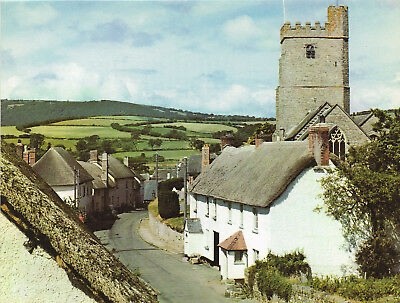
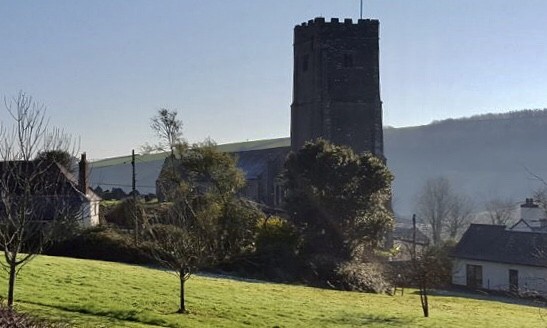
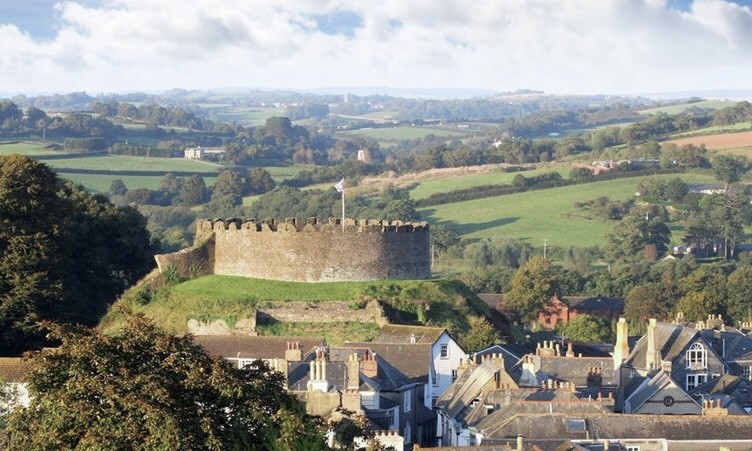
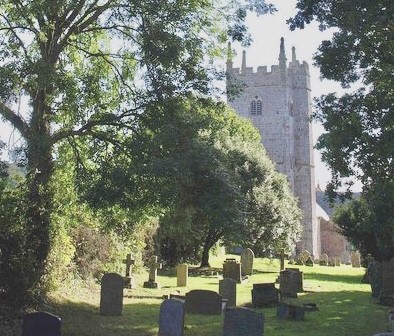
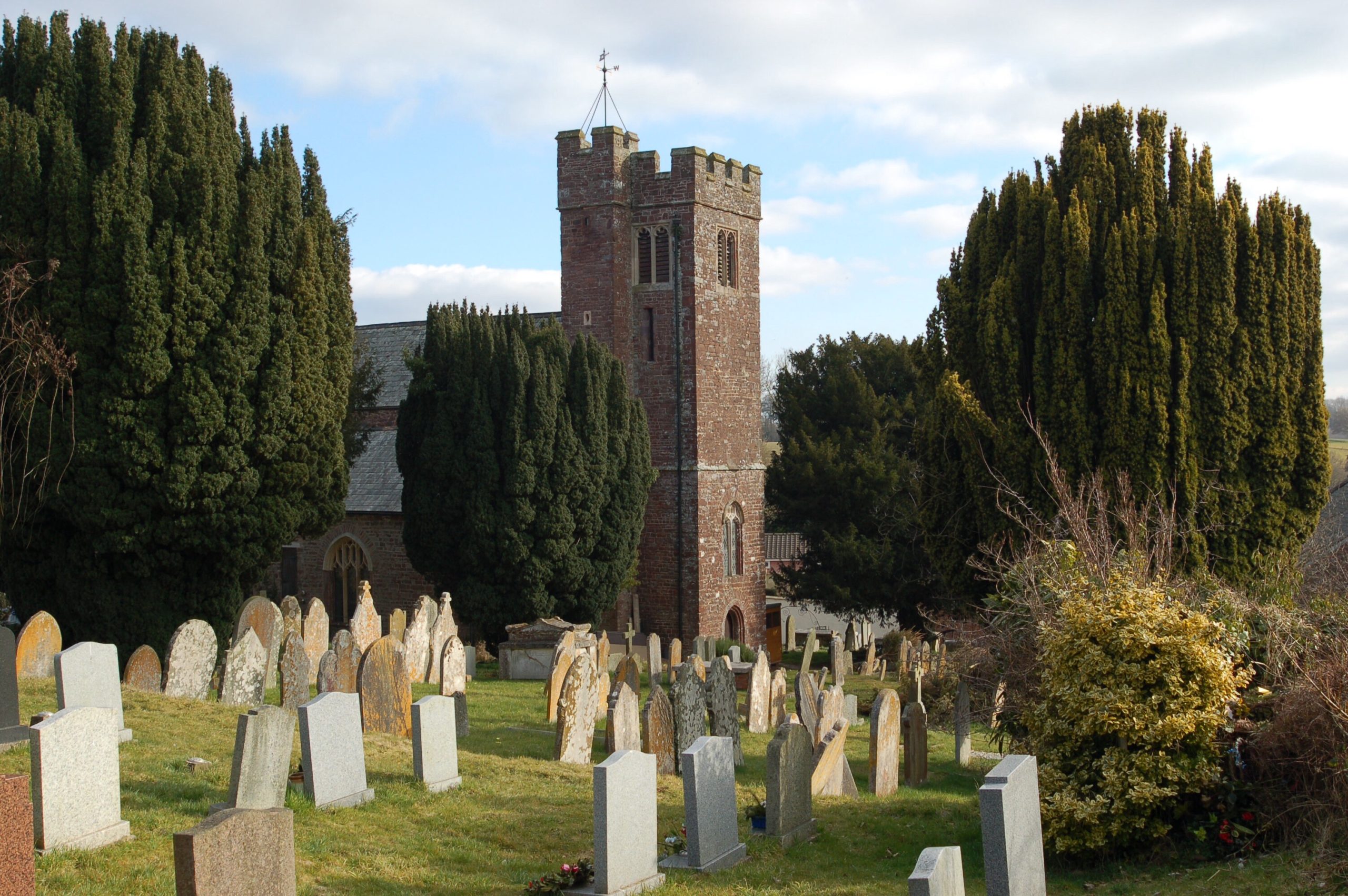
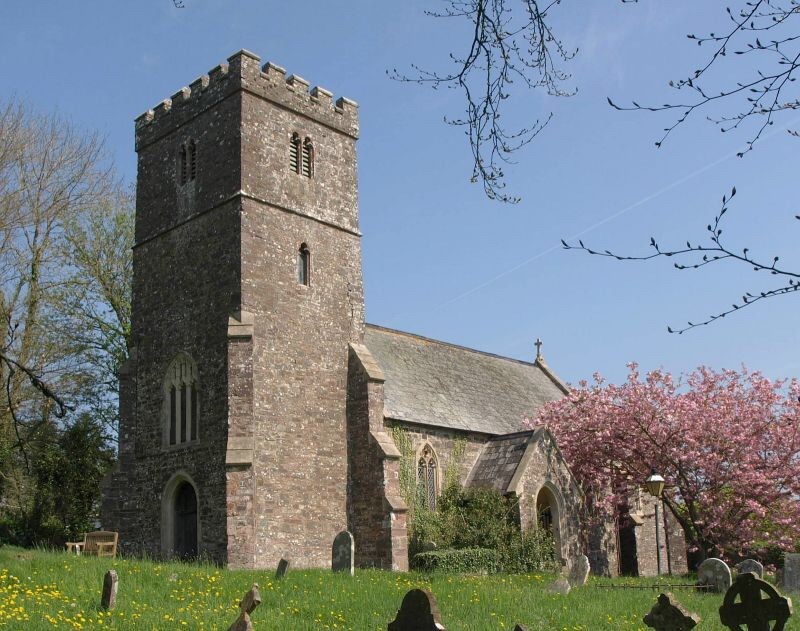
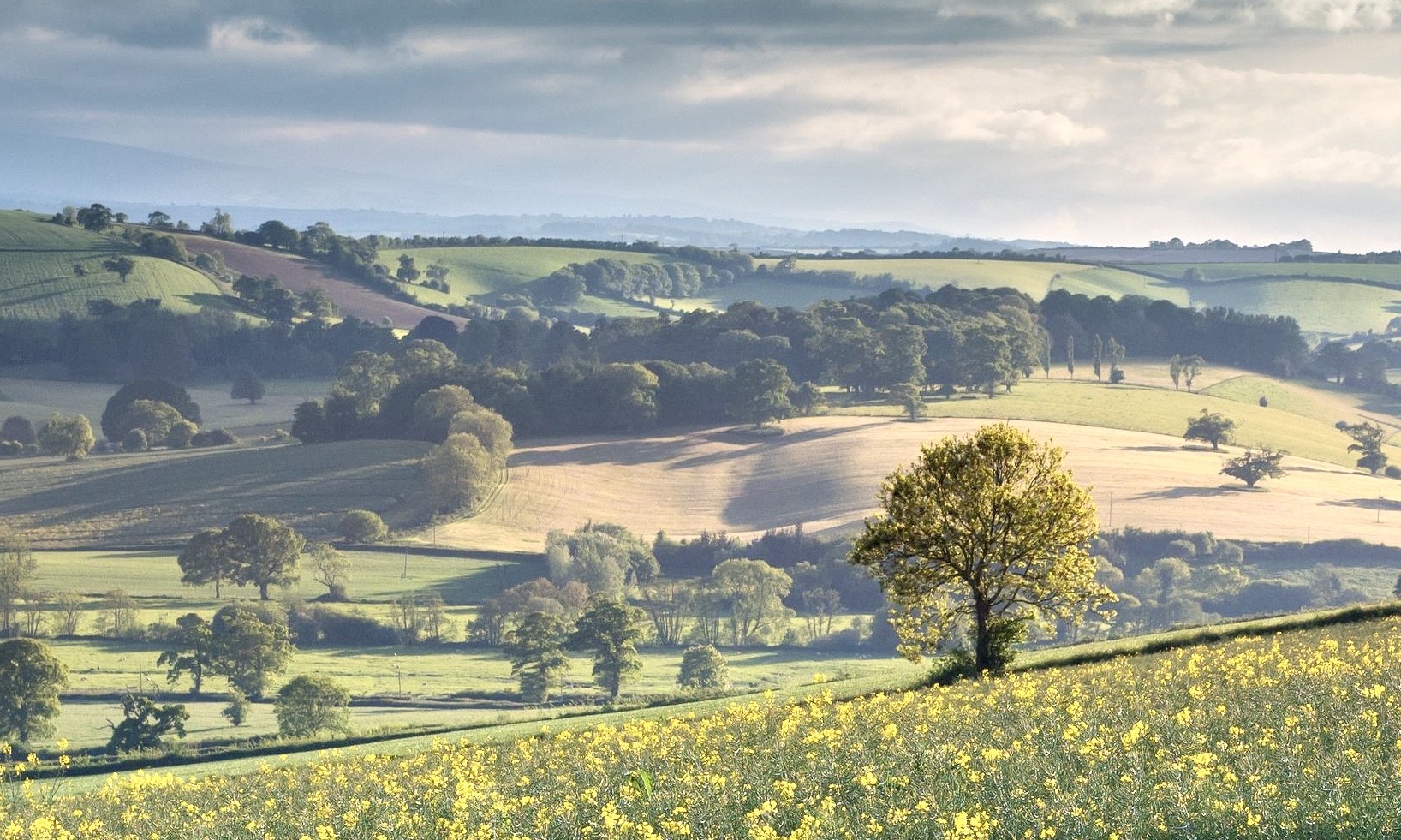
 At home in the West Country
At home in the West Country Important links
Important links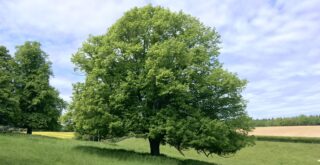
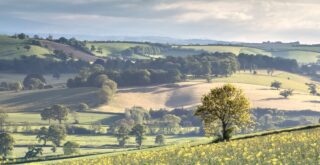
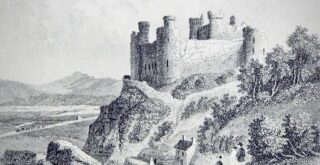
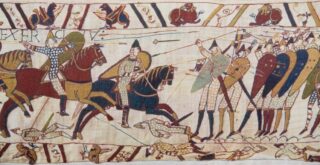
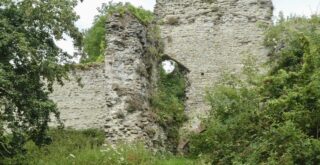
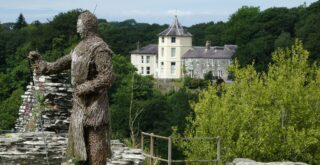
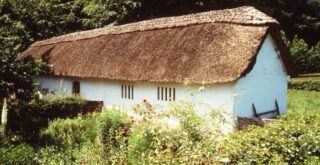
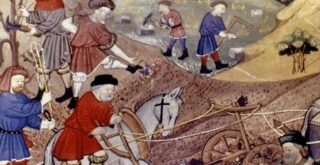
Recent Comments